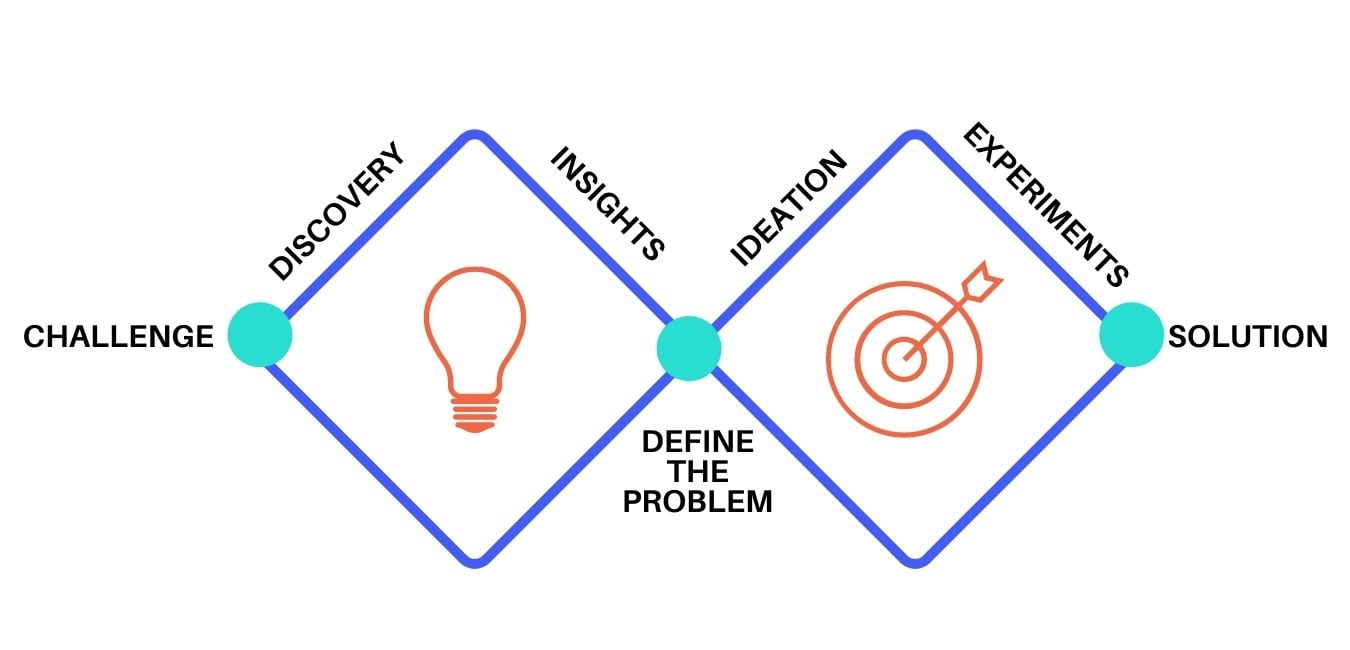The Challenge
Winter brings influenza; this year, it also brings the risk of a “Twindemic,” with COVID-19.
Find human-centered solutions to help the healthcare system that is facing the confluence of the seasonal flu and the surge of COVID-19 cases: "The Twindemic."
We run a virtual design sprint with the following steps:
Our participants diverge upon a prompt, in this case, the "Twindemic", seeking to understand the user's needs and pain points, then converge upon a low-fidelity, human-centered solution to prototype.

Step 1: Identifying problems arising during the "Twindemic"
Our participants diverge upon a prompt, in this case, the "Twindemic", seeking to understand the user's needs and pain points, then converge upon a low-fidelity, human-centered solution to prototype.


We kicked off our six-week virtual design sprint with over thirty participants from six countries across three continents, to co-create breakthrough solutions for the Twindemic.
Participants were divided into 3 different groups based on pre-identified areas of focus:
- education,
- access to care, and
- surge capacity.
The participants shared the problems they see arising during the potential "Twindemic." Based on these problems, the teams generated over 70 inspiring opportunity statements related to the “Twindemic” in our first live session.
We managed this (and all upcoming steps) remotely by using Mural - creating little virtual post-it notes and filled them in on the board simultaneously.
Step 2: Conducting research & interviews to build empathy


After we identified opportunity statements in the first session, during the week participants were asked to perform desk research by:
- reading articles,
- listening podcasts, and
- watching videos, or testimonials.
In our second live session, the teams shared their key takeaways and "Yes, and!" thoughts on each other's findings.
We clustered desk research, yet one emotion prevailed: fear.
Next step, participants conducted interviews to build empathy for users throughout the week. And, they shared their findings during our third live session with empathy maps.
As we synthesize the user interviews, we uncovered patients do not seek COVID-19 testing or care because of:
- Perception of increased risk of COVID-19 infection at healthcare facilities,
- The unknown cost of medical care, and
- The potential to discover comorbidities.
Step 3: Gathering insights to build "how might we" questions


In the fourth week of the "Twindemic" design sprint, participants generated insights through our "insight formula" that will become HMW questions.
The teams built 15 "how might we..." questions focusing on,
- Vulnerable Populations,
- Vaccine Distribution,
- Healthcare Capacity,
- Access to Reliable Information,
- Patient-centered Care,
- and the "Invincible" Mindset.
For the purposes of this sprint, we selected three key "how might we?" questions.
Step 4: Ideating potential solutions
.png)
Choosing one of the HMW questions above, participants performed "Solo Brainstorming" during the week and added their ideas to the Mural board to share with their teams.
In our fifth live session, we clustered all ideas and conducted "Group Brainstorming" and share "Yes, and!" thoughts on each other's ideas to make them better and then we vote on these.
Step 5: Converging upon a solution idea to prototype
Based on generated insights and co-created ideas, we moved forward to build the first low-fidelity prototypes.
.png)
Gift a Vaccine
The "Gift a Vaccine" bandage enables you to show how much you care about your loved ones.
Get vaccinated for them, then wear a bandage with their name with pride.
.png)
Print Ad Campaign
The print ad campaign was inspired by tobacco ad campaigns.
It aims to increase awareness of the impacts of the COVID-19 to convince skeptics who share an "invincible" mindset.
Join the Movement
